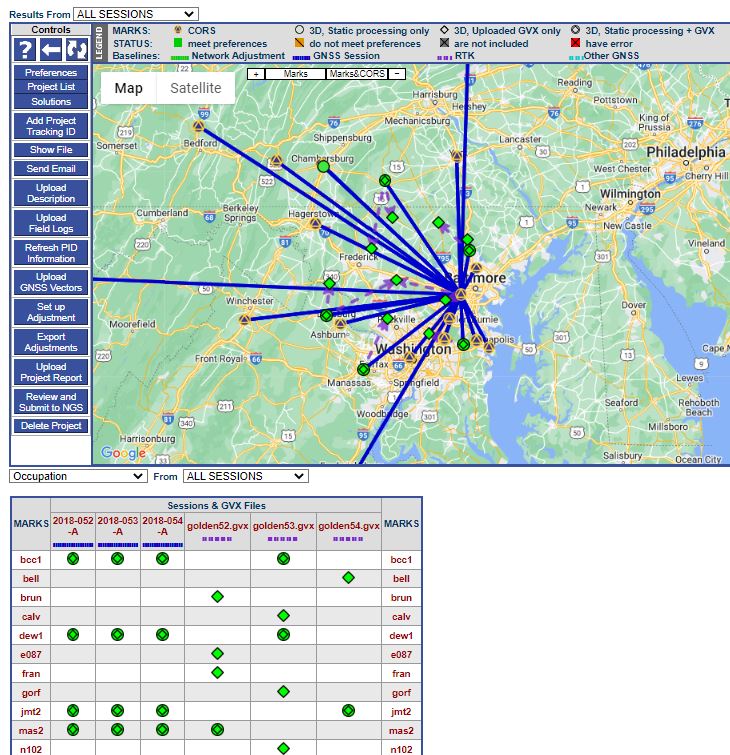11.4. Processing Preferences and Performing the Processing
Besides network design, other processing preferences need to be carefully considered prior to performing the processing. Please refer to Section 4.4 for more information. Briefly, the recommended preferences include:
Solution Name (30 char max): OP always identifies solutions according to the session name (e.g. “2020-123-A” see 7.1). A session can be processed multiple times, resulting in multiple solutions for any given session. However, if the solution name is not changed, each new solution will overwrite the previous one. To avoid confusion, it is recommended to append either a character/digit to the root of the session name, or a short ID like “test” or “final.” For example, if the default session name is 2020-123-A, then the digits 1, 2, 3, etc. can be added to differentiate the different re-processings. Final names would be 2020-123-A1, 2020-123-A2, 2020-123-A3, etc.)
Tip
Consider creating a session/adjustment log book to identify the choices/decisions made in each session/adjustment run
Danger
Only the first character of a solution name is retained in the output files needed for publication in the NGS database. Therefore, names like “A-test” and “B-test” will be differentiated as “A” and “B,” but names like “Test-A” and “Test-B” will be treated as the same solution “T.”
Caution
If the session default letter is changed, the “Occupations” table on the Manger’s Page will show you BOTH the OPUS solution and the session solution, which can cause confusion.
Output Reference Frame: LET OPUS CHOOSE (this will ensure the latest supported reference frames)
Output Geoid Model: LET OPUS CHOOSE (this will ensure the latest geoid model)
GNSS: G (GPS only)
Tropo Model: Piecewise Linear
Tropo Interval (s): 7200
Elevation Cutoff (deg): 15
Constrained Weights: NORMAL
Network Design: USER
When the user is satisfied with the network design and the selection of constraint(s), click the “Perform Processing” button on the top banner, as shown in Fig. 11.7.

Fig. 11.7 The “Perform Processing” button at the top of the Session Processing Page
A confirmation screen will be presented, an example is shown in Fig. 11.8. Examine the confirmation screen to verify that it reflects your intended choices.

Fig. 11.8 The OP Session Processing confirmation window
A short time later (possibly a few minutes 3 , depending on the number of baselines to be processed and given the current traffic using OPUS and OP), baselines will appear on the Session and Managers Pages, as shown in Fig. 11.9.

Fig. 11.9 Manager’s Page showing six successfully processed sessions
Footnotes:
- 3
An analysis of over 10,000 files uploaded revealed that less than 0.03% of files uploaded took longer than an hour to process. If a solution has not arrived within an hour, contact the OPUS Projects Team.